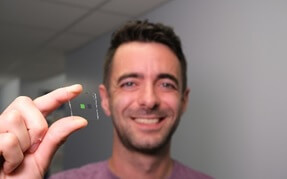An artificial “tongue” that can taste the subtle differences between drams of whisky could help to battle the widespread sale of counterfeit alcohol, scientists have claimed.
This technology is capable of picking up on the differences between the same brand aged in different barrels, with more than 99 percent accuracy and can tell the difference between those aged for 12, 15 and 18 years.
The tongue, made of miniscule pieces of metal arranged in a checkerboard pattern to act like tastebuds, was developed by Scottish engineers at the University of Glasgow and Strathclyde.

By analysing the way the liquid absorbs light the device is able to tell whether whiskey is fake or not with 99pc accuracy and can spot the differences between the drinks, researchers said.
“We call this an artificial tongue because it acts similarly to a human tongue – like us, it can’t identify the individual chemicals which make coffee taste different to apple juice but it can easily tell the difference between these complex chemical mixtures,” says Alasdair Clark at the University of Glasgow. He adds “While we’ve focused on whisky in this experiment, the artificial tongue could easily be used to taste virtually any liquid, which means it could be used for a wide variety of applications.”
In addition to its obvious potential for use in identifying counterfeit alcohols, it could be used in food safety testing, quality control or food security, he said.
The United Kingdom loses almost £6bn in sales every year to counterfeit goods, according to figures from the European Union Intellectual Property Office, and alcohol such as wine and spirits is among the top five items affected.
Earlier this year, a coordinated police operation in 78 countries including the UK found that over €100m worth of potentially dangerous food and drink was being smuggled into shops, airports, seaports and industrial estates.
Illicit alcohol was the most seized item, totaling over 33,000 metric tonnes, Interpol said.
At the time, Paul Stanfield, director of organised and emerging crime at Interpol said: “Counterfeit and substandard food and beverages can be found on the shelves in shops around the world, and their increasing sale online is exacerbating the threat that food crime poses to the public.”
Other techniques exist for analysing liquids. The most common involves analysing the weights of the constituent molecules. Another synthetic tongue developed in 2017 uses 22 different fluorescent dyes an analyses how they affect a liquid’s brightness.




